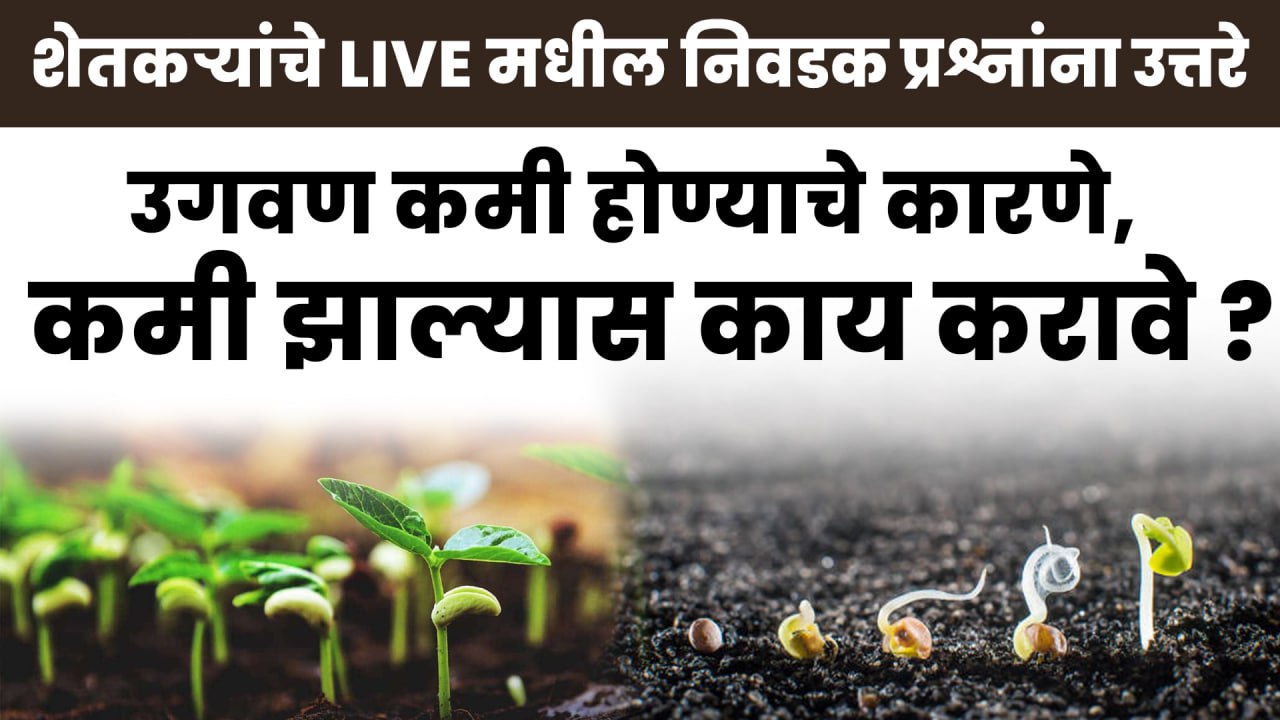Causes of Poor Germination and What to Do if It Happens

Causes of Poor Germination and Solutions – A Guide for Farmers
The first step to successful farming is good seed germination. However, many farmers face the issue of poor germination, which is highly sensitive and directly affects crop yield. Let’s explore the key reasons and solutions behind this problem.
Major Causes of Poor Germination
1. Moisture – The Biggest Factor
Moisture plays a critical role in seed germination.
-
Excess Moisture: Continuous or heavy rainfall after sowing can cause seed rotting.
-
Low Moisture: A dry spell after initial rain can dry up sprouted seeds.
-
Pressure: Heavy rain post-sowing may press seeds deep into the soil, preventing sprouting.
2. Sowing Depth
For crops like soybean, sowing depth should ideally be 4–5 cm.
-
If seeds are sown too deep, the sprout may not emerge.
-
If too shallow or on the surface, seeds may get washed away.
-
Improper sowing by tractor operators can also lead to poor germination.
Moisture and depth together account for 95% of germination issues.
3. Seed Quality
Reputed companies sell seeds only after proper germination testing.
But unknown or low-grade seed sources carry risks.
-
Improper storage,
-
Pressure during transport,
-
Exposure to high heat at retail shops –
All of these can reduce seed viability.
What to Do if Germination is Low?
For Cotton:
-
If germination is poor, replant gaps quickly.
-
Delay causes stunted plants and increased pest & disease issues.
For Soybean:
-
If you've sown branching varieties (other than 9560), don't worry if some seeds don’t sprout.
-
Soybean adjusts by producing more branches when it gets space.
-
Dense planting often causes flower drop and fewer pods.
-
Even with sparse germination, yields may remain stable if the variety is suitable.
-
Gap filling within 10–15 days is acceptable.
✅ Conclusion
While there may be several reasons for poor germination, moisture and depth are the key factors.
With quality seeds, scientific sowing methods, and proper weather timing, farmers can overcome this challenge.
Final Advice
-
Always choose trusted seed brands.
-
Treat seeds before sowing, and carefully manage moisture and sowing depth.
-
Don’t panic — use proper agronomic solutions.
Scientific farming decisions always yield results!
If you found this blog helpful, don’t forget to share it with fellow farmers.
